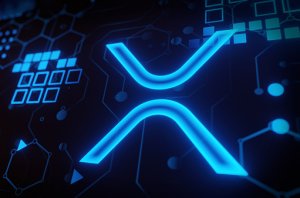John Deaton added that if the SEC were to be successful with its novel “but for” test disguised within the Howey test, all of crypto is in danger as the same argument applies to Vitalik Buterin, Joseph Lubin, Satoshi Nakamoto, and so forth.

John Deaton, the attorney representing 64,000 XRP holders via Amicus Curiae status in the SEC v. Ripple lawsuit, continues to discuss online details pertaining to the case and the SEC’s thought process.
This time, he focused on if XRP itself is a security per se as he has “been troubled as to why the SEC wouldn’t stipulate that XRP itself (including secondary market XRP) are not securities”.
Judge Analisa Torres has recently ordered the public disclosure of exhibits that are expected to be used against Ripple, including a Brad Garlinghouse email to employees and a Chris Larsen email exchange with an XRP holder looking for answers about price dynamics. Both contents were analyzed by attorney Jeremy Hogan.
“After reading these emails and anticipating what the 2012 legal memos likely state, I may finally understand why the SEC won’t stipulate the token itself isn’t a security – a stipulation which would rid the SEC of amicus counsel along w/ his 64K XRP Holders”, said John Deaton.
“When I filed the motion to intervene or in the alternative be granted amicus status, Ripple informed the Court that if the SEC agreed XRP wasn’t a security per se, XRP Holders lacked standing to participate. If, however, the SEC intended to argue XRP itself is a security, Ripple argued XRP Holders should be allowed to participate in the case. The SEC not only refused to stipulate XRP itself isn’t a security, but actually argued all XRP are illegal securities.
“I’ve always questioned why. The unsealed emails and legal memos are barely relevant. An illegal securities offering analysis focuses on the promises or inducements made by the promoter to investors leading those investors to anticipate profits from the efforts of the promoter”, he continued.
“It will be near impossible to prove any real correlation between XRP’s price and public announcements by Ripple (ie partnerships). The SEC must also prove Garlinghouse and Larsen sold XRP in the USA.”
“In reality, the SEC’s case may be so weak and desperate that it believes the only way to win is to prove that XRP itself is a security per se.
John Deaton goes further to say the SEC, in essence, is asserting a “but for” theory in SEC v. Ripple. A broad encompassing theory already recognized by Judge Torres.
“For example, the SEC asserts Ripple created a secondary market for XRP – therefore – all XRP, including XRP traded in the secondary market, are investment contracts w/ Ripple. In short, but for Ripple creating a secondary market there would be no secondary market XRP.
If the two emails abovementioned represent the quality of the SEC’s evidence against Ripple, it may be hard for the plaintiff to prove the XRP was sold within the SEC’s jurisdiction. This leaves the SEC with no other choice than to go with the “but for” theory.
“Thus, the SEC must prove Ripple made promises or inducements that led #XRPHolders to form a reasonable expectation of profits based on the efforts of Ripple, its executives or affiliates. If the truth matters, the SEC will fail miserably attempting to meet that standard.”
John Deaton added that if the SEC were to be successful with its novel “but for” test disguised within the Howey test, all of crypto is in danger as the same argument applies to Vitalik Buterin, Joseph Lubin, Satoshi Nakamoto, and so forth.
